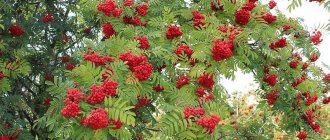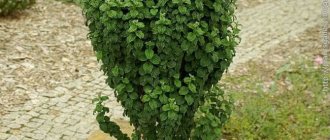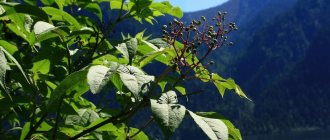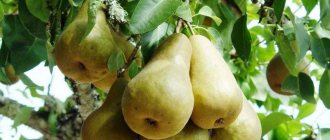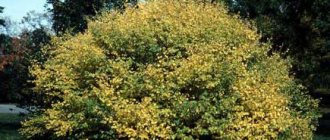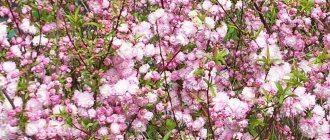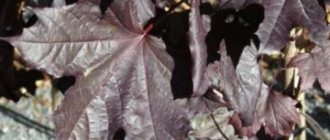Black elderberry medicinal properties and contraindications syrup photo description flowers berries where it grows application beneficial properties
Latin name Sambucus nigra L.
Honeysuckle family - Caprifoliaceae
Genus Sambucus L. - Elderberry
Common names: bazovnik, baz, buzok, baz, boznyak, buz, boz-tree, pshtsalnik, wasteland, wasteland, wild bird cherry.
There are two assumptions about the origin of the generic name. The first is that the Latin name Sambucus comes from the Greek word "sambuque" (red paint) and is associated with the use of elderberry for painting canvas. The second hypothesis is related to the name of the Iraqi musical instrument, which is made from elderberry. And as a medicinal plant, it has been known since the time of Pliny the Elder, who recommended its flowers for colds. In addition, there is a legend among the people about the appearance of elderberry. While hunting, the prince fell behind his retinue and got lost. Finally he came to a hut in a clearing. An old man sat at the entrance and cried. He told the prince that his father beat him because he carelessly carried his grandfather from the bench to the bed and dropped him. The prince went into the hut and saw two even more ancient old men. He became interested in the secret of such longevity. The old people told him that they ate cheese, bread, milk and berries that grow nearby on the edge of the forest. This was the black elderberry.
Botanical description
Black elderberry is a shrub with a perennial life cycle that sheds all its foliage during its dormant period. The berries are bony, black or purple-black. Despite the fact that the plant is classified as a shrub, with proper care it can grow into a real tree over 7 meters.
It has a rounded crown of regular shape, which is formed by branched stems of brown-gray color (young shoots are green) with a large number of yellowish lentils and large lanceolate leaves of deep green color.
They have an elongated shape, the length reaches 25-30 cm. The bark of the black elderberry has a characteristic brown-ash color.
Blooms in May-June, bears fruit in August-September
Blooms from late spring to early summer. Black elderberry flowers have a beautiful creamy color. At the moment of flowering, the shrub emits a pronounced sweet aroma. The fruiting period occurs in August-September, the berries are large, up to 1 cm in size, and have a sweet and sour taste.
Black elderberry is a non-capricious plant and tolerates a lack of daylight.
Flower formula. *Ch5L(5)T5P5 – regular flower with 5 fused sepals, petals and stamens, with one pistil.
Care
This is a rather unpretentious plant, which, however, needs to be pruned, since the fruits appear only on three or four-year-old branches. This process mainly occurs in the autumn. And in the spring, dried and frozen shoots are removed. You can also adjust the height of the bush using pruning.
The plant is not particularly demanding when it comes to watering. With enough moisture in the soil, the elderberry will grow foliage faster and the plant will produce a bountiful harvest. In the spring and autumn, it is necessary to dig up the soil around it, and in the summer, do not forget to loosen and remove weeds. From time to time, the shrub needs to be fed with nitrogen fertilizers, which are applied once every two years. It is quite rarely affected by pests, since the leaves have a specific smell.
Chemical structure
Elderberry fruits contain:
- glucose;
- fructose;
- free acids (mainly malic acid);
- vitamin C;
- tanning agents.
Dried leaves contain provitamin A.
Black elderberry inflorescences contain:
- mucous substances;
- malic, acetic and valeric acids;
- paraffin-like substance;
- solid essential oil;
- terpene and glucoside;
- having the diaphoretic effect of rutin.
The flowers of this plant have unique properties.
Classification
Representative of the Adoxaceae family. Previously, it was classified in the genus “Honeymacaceae” and was even separated into a separate genus “Elderberry”. Latin name Sambucus nigra L.
Other names:
- basenik;
- elderberry;
- elderflower;
- Sambuca;
- Swiss tea;
- wasteland;
- girlish sambuca.
Black elderberry belongs to a small number of species (400) of the honeysuckle family
Pharmacology
Black elderberry has medicinal properties and contraindications.
Due to its chemical composition, it is widely used in medical practice:
- It has the ability to inhibit inflammatory processes and promotes the regeneration of damaged skin.
- Helps digestion. Stimulates the production of gastric juice, reduces acidity, and has bile and diuretic effects.
- Speeds up metabolism.
- For diseases of the heart and blood vessels.
- Used in the treatment of hepatitis.
- Lowers insulin.
- Prevention of vitamin deficiency, antipyretic, antiphlogistic and expectorant.
- Eating berries is an effective prevention of atherosclerosis, insomnia and frequent headaches.
- Reduces blood pressure.
- Elderberry infusion compresses help with joint diseases.
- Skin problems: acne, dermatitis, pigmentation and acne rashes are solved with the help of elderberry decoction.
- Indications for use are:
- liver and kidney damage;
- the occurrence of peptic ulcer of the stomach and duodenum;
- constipation and bloating;
- high nervous excitability;
- difficulty excreting bile;
- boils, rashes, acne, diaper rash and other skin diseases;
- frequent colds;
- atherosclerosis;
- rheumatic lesions, arthritis, gout;
- inflammation of hemorrhoids;
- high cholesterol;
- increased blood sugar;
- metabolic disorders;
- prevention of tumor formation.
Elderberry has a number of medical restrictions:
- pregnancy and lactation;
- ulcerative enterocolitis;
- chronic forms of gastrointestinal diseases;
- diabetes insipidus;
- individual intolerance;
- Should not be taken by children under 12 years of age.
Dosage forms and doses:
- Syrup. Used to prevent ARVI, dry cough, immunomodulator with a general strengthening effect. It is prepared from berry juice, the freshly squeezed mixture is covered with sugar, the mixture is left to “ferment”, it is recommended to take one spoon 3 times a day for 1 month.
- Juice. It has a high content of vitamin C, it is taken to strengthen the immune system and prevent colds, flu and sore throats, stomach ulcers, and inflammatory processes in the genitourinary system.
- Tincture. Made from flowers and rhizomes. Flower concentrate is used as a diuretic, antiseptic and diaphoretic. If you add it to tea, you will get a wonderful tonic and strengthening balm.
- Extract. This is a concentrated extract, which is a component of many medications. Recommended for the treatment of colds and flu. It strengthens cell walls and prevents viruses from penetrating them.
Contraindications for use
What is elderberry? This is a somewhat poisonous plant, and experts do not recommend taking medicines prepared from it to the following patients:
- having individual intolerance;
- renal and liver failure;
- with ulcerative colitis;
- during pregnancy and breastfeeding;
- children under 12 years of age;
- for diabetes and stomach ulcers.
In addition, black elderberry, when used excessively, provokes side effects in the form of nausea and vomiting. You should not try the berries when they are not yet ripe - this risks severe poisoning. If symptoms of illness appear, urgent medical attention is needed.
Elderberry is also very dangerous for pets; they must be protected from consuming this plant. Unlike others, red elderberry is dangerous in any form. It is possible to distinguish poisonous berries only at the beginning of ripening, so you should not collect them in unfamiliar places if you are not sure of their edibility.
Species diversity
Within the genus Sambukus, which includes the black elderberry, it is difficult to make a species classification due to the widespread distribution of the shrub and its morphological diversity.
According to various classifications, the family includes 9-40 different perennial herbaceous plants, bushes, bushes and even trees.
Both wild species (used as medicinal raw materials) and cultivated ornamental varieties are known.
Growing in gardens
Summer residents often grow the plant in their garden plots for decorative purposes. For this purpose, special varieties are used, for example, “black lace”, which has black-pink leaves and pinkish flowers.
For quick rooting, it is recommended to plant the bushes in places well lit by the sun and to water them abundantly. In early spring, plants are fertilized, and in summer, for active growth, fertilizers are added to the water when watering.
When transplanting bushes, use the following mixture:
- one part each of peat and sand;
- two - turf land.
Regions of growth
It is found in subtropics and temperate climates, in:
- Tunisia;
- Algeria;
- Europe;
- Iran;
- Turkey.
Elderberry grows mainly in Australia and the Azores, in the temperate and subtropical climate zones of the Northern Hemisphere.
Elderberry feels good in Ukraine, the Baltic states, Belarus, Crimea, the Caucasus, in the southwestern regions of Russia and in southern Siberia.
Regions of distribution on the map of Russia
Specifics of black elderberry
The plant has a wide range of uses.
Pharmacological use
- Flowers, due to the content of essential oils, rutin and mucus, which can envelop the mucous membranes of the nasopharynx, as well as the presence of tanning substances, are widely used as an antiviral and antiphlogistic agent.
- The leaves, despite the presence of nerve paralytic elements in small quantities, are used as a remedy to counteract inflammatory processes.
- Fruits are a real “storehouse” of vitamins, sugars and organic acids. They contain carotene and rutin, which increase hemoglobin levels and improve the elasticity of small vessels. Natural highly effective laxative.
- Roots and bark. It is a diuretic and expectorant. The bark is a source of vitamin B4, which has atherosclerotic, membrane-protective and sedative effects, normalizes fat metabolism, and helps to lose weight.
Black elderberry bark is a source of vitamin B4
In nutrition
Elderberry water is made from elderberry flowers - a flavoring agent for liqueurs and fortified tinctures. The fruits are used as food coloring in creams, sweets, and wines. Used as a dietary supplement with almond flavor. A seasoning that can replace pepper.
Berries are consumed both fresh and processed. The scope of their application is extensive. This includes confectionery, jellies, winemaking, even vinegar making. Jam is made from the petals. Young leaves are good in salads.
In landscape design
An excellent option for landscaping, creating garden compositions and as a free-standing component of a garden composition. Thanks to its beautiful shape, it looks great in the center of smaller plants. It is bred to shade gazebos, dilute hedges and decorate the coastal zone of ponds.
In cosmetology
Cosmetics with elderberry are known as anti-aging, tonic, and:
- has an antioxidant effect;
- improves skin immunity;
- relieves inflammation, swelling;
- calms;
- tones;
- gives elasticity.
Folk remedies
Doctors among the people like to use black elderberry. Its medicinal properties are extensive, so various kinds of medicines are made.
Infusion of flowers for drinking
A balm with an anti-inflammatory and enveloping effect is made from the flowers. It is effective against colds and diseases caused by viruses at high temperatures. Used for tonsillitis, bronchitis. Removes mucus from the bronchi.
For external treatments and in gynecology (douching), flower infusions are used.
Laxative infusion of fruits
For constipation, an infusion of berries is good. You can prepare it from three tablespoons of berries and a glass of boiling water. Leave overnight and take one glass in the morning before meals.
Leaves poultice
Elderberry leaves are known for their anti-inflammatory effect and promote the healing of wounds, both clean and with purulent complications. The steamed leaves are placed on a cloth and applied to the wound.
Treatment of edema with elderberry bark infusions
Black elderberry bark powder helps fight swelling and is also used in the treatment of kidney diseases. The action of the drugs is selective (only on the source of inflammation), without affecting the functioning of the heart, and without increasing blood pressure.
Take the infusion up to four times a day, half a glass. It relieves swelling caused by cardiac disorders.
Uses of elderberries
Vein diseases, hemorrhoids, hepatitis, stomach and duodenal ulcers are treated with freshly squeezed juice or syrup based on it. The syrup relieves severe coughing attacks and helps thin sputum. Used to treat liver diseases and enhance choleretic processes, improves immunity.
Berry extract from fresh fruits is known for its antitumor properties.
Alternative medicine recommends the use of elderberry extracts as a prevention of cancer.
Elderberry syrup
Decoctions from leaves
The leaves are used to make decoctions. The leaves are mixed with sage and steamed with boiling water, one glass is enough. Leave the infusion for one hour, take half a glass per day
How to grow
Rich lands are recommended for breeding, however, in nature it easily takes root both in the shade of the undergrowth and on poor soils. To grow black elderberry on the plot, you need to decide on the amount of gardening work, because a month before it you need to prepare the soil.
Dig a hole a little more than half a meter deep and wide. The top layer of soil is separated and mixed with humus in a 1:1 ratio, and phosphorus-potassium fertilizers are added. At this stage, you immediately need to assemble the fence so that the elderberry does not “scatter” throughout the area.
It is better to use slate or metal sheets. If you plan to form an elderberry into a tree, you will need support.
A black elderberry seedling is lowered onto a loosened layer of soil at the bottom, which has been fertilized with a small amount of mineral-enriched soil, covered with the prepared mixture, compacted and watered.
Application in landscape design
What is elderberry in garden design? This is an extraordinary bush that is incredibly beautiful from spring to late autumn. It tolerates pruning well and is very popular among landscape designers for this. It will go perfectly with fruit bushes and trees, and will also protect them from pests. You just need to make sure that the bush does not grow too much and does not shade other plants. If you plant an elderberry near a gazebo, it will repel mosquitoes and flies. It is also planted in unattractive areas of the garden, where it is necessary to hide a compost heap or outbuildings.
Reproduction
Parthonogenesis can be carried out using standard methods:
- seeds;
- layering;
- cuttings;
- dividing the bush.
When propagated by seeds, the varietal characteristics of the mother plant are almost never preserved. Therefore, vegetative propagation is recommended.
If you decide to propagate by seeds, you need to sow them in rows at a short distance from each other. Sowing depth is no more than 3 cm.
Propagation of black elderberry by seeds
For the cutting method, the material is prepared in July. The length of the cutting should not exceed 12 cm, have at least two internodes with a pair of upper leaves. Planted in a sand-peat mixture, covered with a plastic cap. In autumn, rooted cuttings can be transplanted into the ground.
Reproduction by layering is a method that gives almost 100% survival rate. Either young or lignified 2-3 year old shoots are used. They are bent into pre-dug grooves and pressed with staples so that the tops remain on the surface. Cover with a mixture of soil and compost.
The division of the bush is carried out in the fall. The overgrown plant is dug up and divided into approximately equal parts. Each part must have developed roots and shoots. All cuts and cuts must be treated with ash. The separated parts are planted in pre-prepared holes.
Cultivation
Elderberry can be propagated in different ways:
- Seeds. They are sown in autumn. In the spring, sprouts appear, which a year later are planted in a new place.
- Cuttings. During the summer, they are cut from the bush and rooted in the ground. A cut of an adult plant is processed.
- Withdrawal. This method is the most labor-intensive, but also more effective. The shoots of the bush are bent to the ground, placed in furrows, and sprinkled with soil. Next season, they are carefully separated and transplanted to a permanent place.
How to collect, prepare and store
Flowers are collected whole. It is necessary to cut off the entire inflorescence, because at the time of drying, the volume of the product is greatly lost. Dry the material in a well-ventilated room at a constant temperature.
The slow drying process is a guarantee of quality material.
The fruits are picked ripe when they have reached a deep purple color. The conditions for drying fruits are different from drying flowers. It is better to use special dehydrators where you can regulate the temperature.
The elderberry berries dry out greatly, leaving only 15% of the harvested yield. However, not all of the liquid evaporates during drying, which reduces the shelf life of dry berries. They need to be used six months in advance and the fruits must be mixed regularly to avoid spoilage.
Medicine does not use leaves in the preparation of medicines. But people gather at the time of picking flowers. They are laid on a flat surface and placed in a well-lit place to dry. Afterwards they are taken to the shade, where the leaves are dried. The dry product is approximately a quarter of the collected mass.
Elderberry flowers, its berries, young branches, leaves, grains and bark are used as medicinal raw materials.
The bark and roots are used in non-standard medicinal practices, since there is no scientifically proven effectiveness of these materials. Harvesting is done in the spring for the bark and in the fall for the roots.
The collected material is finely chopped and dried at high temperature in a room with good ventilation.
Useful properties of the plant
This plant has a beneficial effect on the body, and often all its parts are used to prepare various infusions and teas. Decoctions are used as:
- as an antipyretic;
- analgesic;
- laxative;
- anti-inflammatory;
- expectorant;
- antiseptic;
- Causes a gag reflex in case of poisoning.
- diuretic;
- antibacterial;
It is strictly forbidden to prepare medicinal decoctions and other remedies from green stems of young plants and unripe fruits. Because they are loaded with life-threatening toxins.
Historical information
Elderberry has been known to mankind since ancient times. The ancient Greeks made musical instruments from its shoots, and it was mentioned in the works of the philosopher Pliny.
The Slavs and representatives of the Germanic peoples (Germans, Danes, Poles, Czechs) revered black elderberry as a sacred plant due to its healing and poisoning capabilities.
It was believed that its berries have the ability to prolong life and make it possible to see the future. The fruits and flowers of the black elderberry were eaten and used as medicinal supplements.
In conclusion, it is worth noting that the plant is not only easy to grow, but also has a whole range of advantages. Extensive use as a treatment justifies the value and popularity of elderberry.

